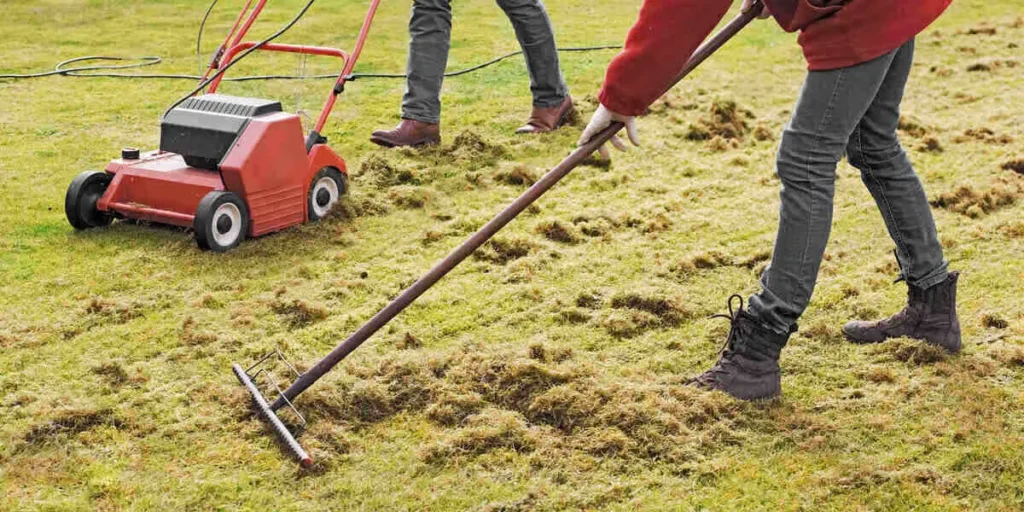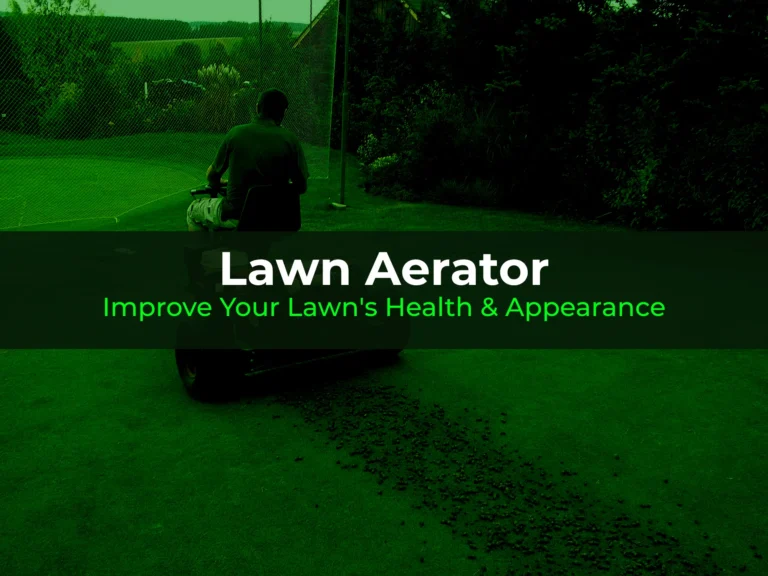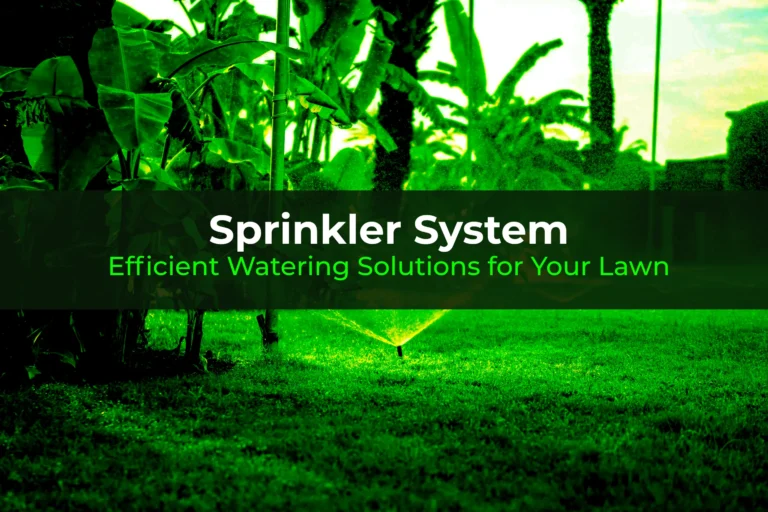
Dethatcher | Essential Lawn Care Tool for a Healthy Lawn
Discover the benefits of using a dethatcher. This essential lawn care tool helps remove thatch buildup, promoting healthier grass growth and a vibrant lawn.
Understanding the Role of a Dethatcher
As you would have learned, a dethatcher is a machine that absolutely necessary for the care of the lawn. It is designed for thatching, that is, clearing of the thatch layer, which is formed by dead grass blades, roots and other plant debris that baking in the soil surface up to grass blades. This build up could prove to be extremely disastrous to the lawn and this is because the soil becomes compacted and all the elements of water, nutrients and air are unable to permeate through it. Thus, the grass cannot consume or produce enough for the plants, causing them to grow weak and unhealthy.
It is very important to remove thatch as the process has been widely detailed how it has benefits to any given lawn. However, this layer once becomes thick, it supports the growth of pests and diseases, which have an even worse impact on the health of a lawn. Another disadvantage that soil thatch level has is that a thick thatch layer prevents useful substances such as fertilizers or other types of lawn care treatments from reaching the soil, where they are needed most. Tool and equipment maintenance is very important especially if you want to keep the health and vibrancy of your lawn in check hence the need to regularly use a dethatcher.
There are many types of dethatchers out there and they are categorized between stand-alone and attachment types and also according to size of the lawn that will be used for dethatching. These models are normally human-powered and are well suited for use on small properties or for localized work.
These are effective in case the individual wanting this service prefers to work closely and do not mind being a bit much more active in the process. Electric dethatchers are the second option with the benefits of being more convenient and time-saving than the manual kind. They are ideal for averagely sized lawns and often give satisfactory operations and use in comparison to their operational efficiency. These are the most powerful, and are most recommended for large yards and lawns or commercial use. They can work wide areas within a short period of time and is perfect for people who need a powerful tool.
Therefore, it can be concluded that determining the purpose of the dethatcher and its application in the lawn management do contribute to the improvement of the overall health and presentation of the yard. If you have a professional tool to get rid of thatch, it is easy to control thatch and also provide a soil surface for the grass to gain all the elements it needs for growth.

Benefits of Dethatching Your Lawn
Thus, dethatching your lawn has the following benefits which are very essential in maintaining the lawn’s health as well as enhancing its looks. The first benefit is the enhancement of the aspect, water infiltration. When the thatch builds up, it creates an effective mat against water to get down to the soil. This way, the traitor that is a dethatcher, takes away this layer and lets water into the ground in order to benefit the roots of the lawn.
Another considerable advantage is the stimulation of roots’ development. Properly developed root systems are desirable for a healthy lawn, however thatch hinders root spread by putting in its way a barrier which doesnt allow air, water or nutrients to pass through. A dethatching helps reverse this occurrence by breaking the layer, enhancing root growth in the lawn hence making it hardy to the environmental conditions.
In the same regard, dethatching is also influence the occurrence of pests and diseases that may attack the grass. Insects and various pathogens affecting plant growth can easily make thatch their home, and consequently, harm your lawn. By eradicating this environment, you could reduce the probability of these problems, thus enhancing the health status of your lawn.
From a visual aspect, dethatching contributes to having a better-looking green lawn. The water can infiltrate more into the soil and nutrients can also mobilize and get to the grass roots where the plants can take them up in a better manner. This leads to a full and compact looking variant that helps to give your outdoor area even more charm.
Moreover, dethatching will complement other functions including the application of fertilizer or planting of new seeds in the lawn. Especially, fertilizers can be spread to the site adequately only after the thatch layer has been stripped off to a great extent so that optimum results can be achieved. Likewise, overseeding becomes more efficient in the sense that the seeds had direct contact with the soil which in turn results to increased germination rates and optimum density of the lawn.
To summarize, dethatching their lawn is an important task which plays a significant role in lawn care and contributes to obtaining the improved and healthy appearance of the lawn.
When and How to Dethatch Your Lawn
Raking and removing the dead grass is one of the most important and effective practices that should be done in lawn care. When it comes to dethatching, timing is crucial and mainly, depends on the type of grass that is being grown. To cool-season grasses, the practice is best done in early spring or during late fall while thatch removal in warm-season grasses should be done during early summer or late spring. This helps the grass to grow as required provided the soil and climatic conditions favours its growth to the extent that the planned mowing time coincides with the times that the grass attains its maximum growth.
Thus, preparation is critical before commences the process of dethatching. Begin by cutting your lawn to the lowest setting of your lawnmower than you ordinarily do. This makes for easy operation of the dethatcher because the thatch layer is easily penetrated. Then, it is advisable to water the lawn for a few days before dethatching since the practice is easier when the soil is slightly wet.
The final process of the dethatching can be carried out on your lawn once it has been prepped in the right manner. Follow these steps for effective dethatching:Follow these steps for effective dethatching:
- Choose the Right Dethatcher: For parts of the lawn that are small enough to till, you can use a dethatching rake for your lawn while for large lawns you can hire a power dethatcher.
- Set the Dethatcher: It is recommended that the controlling height of the dethatcher should depend on the amount of layers of thatch that has been accumulated on the ground. It should be set just deep enough to do away with thatch while avoiding the cutting of the healthy grass blades.
- Dethatch the Lawn: It is recommended to pass the dethatcher in a pattern similar to mowing over your lawn for the best results. The passes should slightly overlap to help the person passing remove dirt from the areas adjoining the previous pass.
- Collect the Debris: Once you have dethatched the lawn, collect and take away the removed thatch and other materials. This can be devised or dumped, depending on the nature of the item and the local regulation with regards to waste disposal. After dethatching the care that is taken also matters. Since dethatching is very likely to stress the lawn, it is important to water the area deeply after completing the process. Using a balanced fertilizer can also help in new growth after the crisis as well as recovery. Normally, the process of dethatching should be done once a year or at times when the thatch is very thick probably once in two years. Thus, proper assessment and evaluation of your lawn’s thatch layer will assist you in determining the appropriate duration.

Choosing the Right Dethatcher for Your Lawn
In essence, choosing the right dethatcher truly is a determinant to the health of a lawn. Different kinds of dethatchers are available, and each type has its strength and weakness. Understanding these can assist you make a advisable decision depending on the requirements of your lawn care.
Manual Dethatchers: These are the simplest form of dethatchers that are moved manually by hand by their users. They are best for small-sized lawns or when specific sections that experience minor accumulation of thatch only are dealt with. The uses of manual dethatchers are that they are normally portable and can be easily stored. But they need labour, a considerable amount of it, which implies that they are not ideal for extensive lawns. On the flip side, they are relatively cheap since you do not need to use fuel or electricity to run them.
Electric Dethatchers: Electric dethatchers on the other hand are preferred for medium sized yards as they are highly efficient. They stand as convenient tools in their usage and as compared to using manual dethatchers they do not demand intense efforts. In general, electrical models are also lighter as compared with the models that are powered by gasoline, which is preferable in terms of maneuverability. Jute generates less heat and is not as powerful as the synthetic ones; it can have difficulties with very thick thatch layers, though. Also, in terms of design, their performances are also restricted by the length of the power cord which may be a drawback for big yards.
Gas-Powered Dethatchers: A gas powered dethatcher is the most effective kind, especially for large lawns. They are more powerful and can easily go through thick thatch layers when in operation. These dethatchers are very efficient, allowing one to removes large amounts of datch within a short time on large lawns. On the flip side they are bulky, noisy, and need constant attention in terms of maintenance. They also blend well with constraining in as far as cost is concerned since they are usually more costly than the manual or electric models not only in terms of the first cost but also in terms of fuel cost.
When selecting an ideal dethatcher the following factors should be put into consideration for instance the quality of the tines, the number of heights, and ease of usage. In thatch control, it is crucial to use tines of high quality so that thatch can be removed leaving the lawn unharmed. This makes it easier for you to be flexible and set the dethatching process to your lawn’s requirements. It is also essential to look at the user-friendliness of the models you intend to use if you are covering large areas; this should have comfortable designs and controls.
And finally, do consider the size of your lawn and the money you’re willing to spend. Small lawns are well served with manual or electric dethatchers; however, if one owns a large area, then, one may have to get a gas dethatcher. The above factors, when properly assessed, will enable you to choose the most appropriate dethatcher in order to have a healthy and well-established turf.
Conclusion
To sum it up, it is appropriate to state that constant care for lawn and Lawn Dethatching is very needed in order to keep you locality good looking and healthy. Thus, by raking the thatch layer, which builds up on the soil surface with time, you enhance the likelihood of penetration of air, water as well as nutrients to the grass – factors that lead to healthy growth of the grass. You can add dethatching as one of the services to be implemented on your lawn besides the fact that it helps improve the aesthetic value of your lawn, it also helps in the overall health of the lawn.
As earlier pointed out the importance of dethatching has the following advantages. It also works well in preventing diseases and pests in the lawn, cycling traffic on the lawns or garden without causing compaction of the soil and encourages deeper root growth. These advantages, when accrued, help to guarantee that your lawn is green and appealing as per the other seasons of growth. Core aeration or dethatching of lawns is one of the most basic practices in lawn care and maintenance together with mowing, watering, and fertilizing.
Thus, in order to enhance the outcome, the lawn should be assessed periodically. Another notable consideration is to look for symptoms of thatch layers over-growth; spongy and poorly drained area. If you identify that you need dethatching, you may consider buying the dethatcher or gain one on hire basis for occasional use. Though the use of this tool may make the task easier and less time consuming, Moreso the results will be better for your lawns.
It is advised to go to the next level in lawn care by evaluating the current status of the turf and decide if it needs dethatching to improve its state. It’s a worthy investment to make to get a better dethatcher that can help in producing a better looking lawn. It is recommended that dethatching should be incorporated as a regular practice among the lawn care practices and this is likely to lead to having an attractive green space, which will increase the value of the property .
Frequently Asked Questions (FAQs)
How do I know if my lawn needs dethatching?
In this case, the task of deciding whether your lawn requires dethatching work can easily be done, by just looking or assessing it physically. So, if you observe thatch layer which is higher than half an inch, this is a right time to dethatch. Some of the common symptoms or indicators of excessive thatch include spongy grass, hard to mow Drew and poor water infiltration. Thatch can hinder the availability of nutrients water, and air reaching the roots of the grass resulting to a weaker lawn.
Can I dethatch a newly seeded lawn?
Dethatching a newly seeded lawn is not recommended. Young grass plants are delicate and can be easily damaged by the dethatching process. It is best to wait until the lawn is well-established, typically after one or two growing seasons, before considering dethatching. This allows the grass to develop a robust root system capable of withstanding the dethatching process.
Is dethatching the same as aerating?
No, dethatching and aerating are not the same. Dethatching involves removing the layer of dead grass and organic debris that accumulates on the soil surface. Aerating, on the other hand, involves perforating the soil with small holes to allow air, water, and nutrients to penetrate deeper into the root zone. Both processes are beneficial but address different aspects of lawn health.
What should I do after dethatching my lawn?
After dethatching, it’s important to follow up with proper lawn care practices to help your grass recover and thrive. This includes watering the lawn thoroughly to alleviate any stress caused by dethatching. Fertilizing the lawn can also promote new growth and strengthen the grass. Overseeding may be necessary if the dethatching process has created bare spots. Finally, regular mowing and maintenance will ensure the lawn remains healthy and resilient.
About Lawn Movers Guide
Interesting Posts



Compost Spreader | Enhance Your Lawn & Garden Health

Landscape Fabric: The Ultimate Solution for Weed Control

Plant Markers: Essential Tools for Organized Gardening

The Benefits of Using a Cylinder Mower for Your Lawn
Twenty years from now you will be more disappointed by the things that you didn’t do than by the ones you did do.
- Mark Twain Tweet

Lawn Aerator | Improve Your Lawn’s Health & Appearance


Fertilizer Spreader: Enhance Your Lawn’s Health Today
